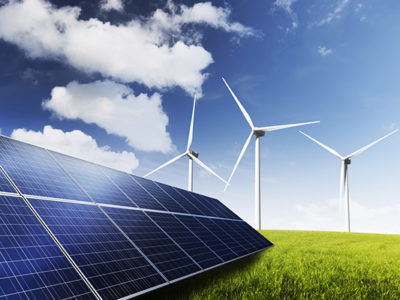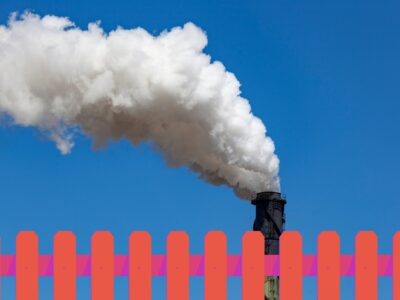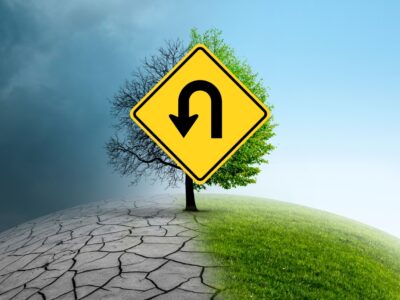Guest Contributor Naomi Wheeler: States and Cities Should Prioritize Equity While Building Grid Resilience
Learning from Grid Resilience Threats and Opportunities in California and New York
Electrical grids across the country face a complex series of overlapping threats to grid resilience in 2020. Wildfires and hurricanes have become the new normal as climate change intensifies the magnitude of extreme weather events. These destructive events create widespread systemic shocks for electrical grids already facing several underlying vulnerabilities.
In a recent research report, I present case studies of grid resilience threats and opportunities for California and New York, focused primarily on New York City. Each jurisdiction faces a unique mix of threats as a result of aging grid infrastructure, under-investment in maintenance and repairs, patterns of human development, and, most notably, climate change.
California is battling the twin threats of wildfires and the preventive power outages that its utilities rely on to reduce fires sparked by their own equipment. The state’s precarious grid situation appears to stem from many causes, including decades of under-investment in grid infrastructure, the effects of climate change, poor forest management by state authorities, and widespread development in the wildland-urban interface. These forces operate in the context of California’s increasingly severe housing crisis, racial and economic disparities in air pollution impacts, and the lengthy bankruptcy proceedings of Pacific Gas & Electric Co. (PG&E), its largest electric utility. California utilities’ attempts to mitigate the risk of deadly and destructive wildfires through preventive power outages have left millions in the dark and created a whole new suite of risks for human health and livelihoods.
On the opposite coast, New York City faces its own pressing grid threats as a result of its aging and heavily centralized grid infrastructure, population density, and coastal location. Climate change is exacerbating many of New York City’s inherent grid threats through sea level rise, severe storms, and extreme temperatures. As with California, those grid threats affect low-income communities and communities of color most severely. The city, its main utility (Consolidated Edison), and state regulators and policymakers appear to have awakened to the need to address grid resilience threats sooner than their California counterparts, largely in reaction to the damage caused by Superstorm Sandy in 2012.
Both coastal jurisdictions deal in extremes, with abundant wealth and investment accompanying profound inequities in access to housing, reliable energy, clean air, and other essential resources. These inequities make certain communities far more vulnerable to climatic hazards and corresponding grid threats than others. Each jurisdiction faces a choice between pursuing grid resilience strategies that will deepen these disparities and those that will advance environmental and economic justice by democratizing access to clean and reliable energy.
Solutions to improve grid resilience range from physical improvements to traditional grid infrastructure to reimagining more distributed and decentralized energy systems. Some of the most promising strategies include:
- Expanding renewable distributed energy resources, especially microgrids
- Policy and insurance reform to reduce development and encourage residential safety measures in high-risk areas, incentivize utilities to invest in preventative grid resilience measures, and support microgrid development
- Energy efficiency and demand management initiatives
Both jurisdictions must also choose among various grid resilience strategies while working toward their greenhouse gas mitigation goals. California has committed to sourcing 60% of its electricity from renewable energy sources by 2030 and 100% of its energy from zero-carbon sources by 2045, while New York plans to achieve 70% of its electricity from renewable sources by 2030 and 100% from carbon-free sources by 2040. Accordingly, they should focus on strategies like solar-powered community microgrids rather than diesel generators, which can provide short-term power supply but also cause local air pollution and contribute further emissions to climate change, thereby exacerbating the threats from wildfires and hurricanes.
There is no silver bullet to swiftly achieve grid resilience in either California or New York City. As elsewhere, California and New York will need to commit to an ongoing and iterative effort to implement a range of grid resilience strategies and incorporate feedback on which strategies are effective, and which have unintended consequences. To be truly effective and sustainable, grid resilience efforts must respond to input and critiques from diverse stakeholders, including wildfire victims, neighborhoods most impacted by hurricanes, grassroots organizations, those living near polluting industrial sites, both urban and rural communities, academics, and renewable energy experts, to name a few.
Because all Californians and all New Yorkers use electricity and are affected by the electrical grid, policymakers and utilities should center the equity implications of any potential grid resilience strategies in their decisions. And the voices of low-income communities and communities of color— who are often most jeopardized by climatic and grid threats and just as often left out of policy decisions that affect them—must be front and center for such strategies to avoid deepening existing inequities and instead truly achieve grid resilience for all.
Naomi Wheeler is a third-year law student at Berkeley Law. Naomi worked as a graduate student researcher for Professor Dan Farber during the spring 2020 semester.
Read her research report: Fire, Wind, and Waves: Grid Resilience Threats and Opportunities in California and New York.








Reader Comments